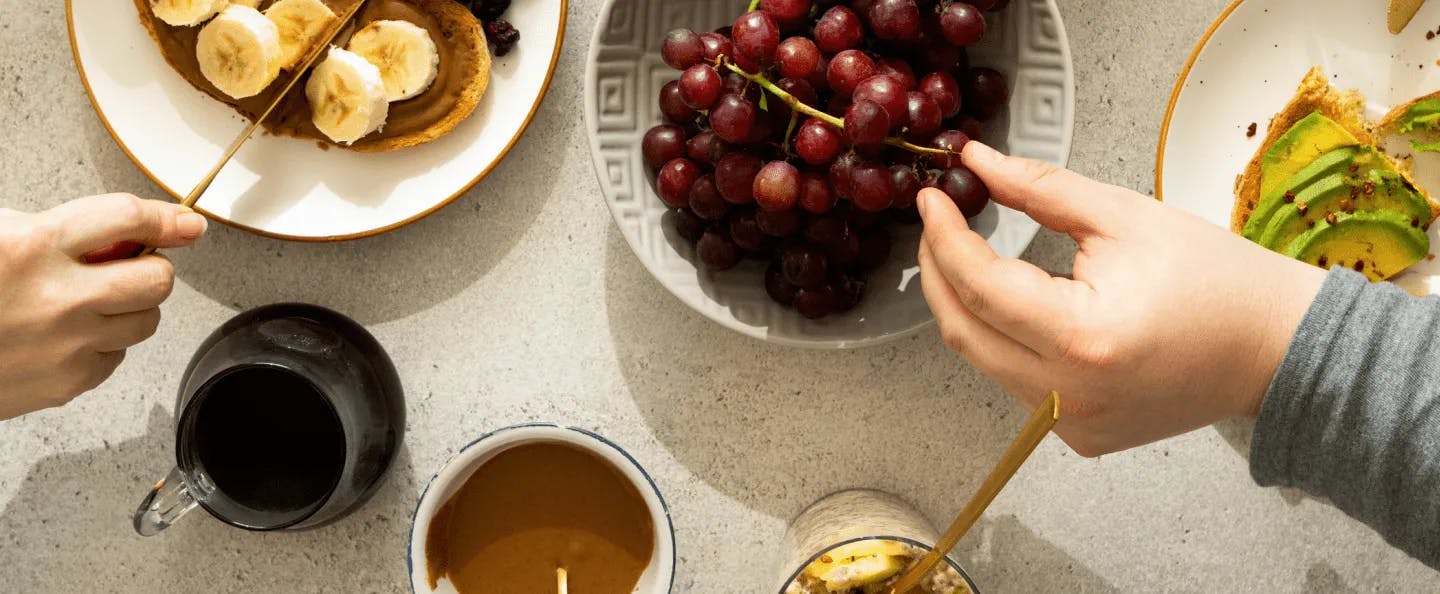PDA Meaning Defined & Explained in Love & Relationships

You have probably heard about, talked about, and seen PDA in various situations. But what is it exactly, and how do you navigate the wide world of PDA in your own relationship? With societal norms in place, it can be difficult to know what’s fun and flirty and what might elicit negative reactions. Here, we’ll define the PDA meaning, how to determine what’s okay for you and your partner, and if it’s a healthy form of expression in relationships. Buckle up! Let’s talk about all things PDA.
What does PDA mean?
When you see two people engaging in some sort of physical affection–whether a kiss, handholding, or even a mild gesture like a fist bump–you’re witnessing PDA. PDA stands for “public display of affection” and means, well, just that: people in public, or in the presence of others, being physically intimate with one another. When you think of PDA, your mind might jump straight to a couple French kissing next to you on the subway or your sister and best friend being all over each other at your housewarming party. While those are definitely both forms of PDA, they don’t represent all types of public displays.
PDA can take many forms, from a peck on the cheek to grinding at a club. We’ll spare you a full list of examples, but it is worth noting that PDA can include small gestures, too, like a pat on the back, rubbing someone’s shoulders, or one of those awkward side hugs. Basically, the PDA meaning is vast and includes quite a few physical interactions.
PDA: What’s okay?
PDA lives a bit in the gray area of everyday culture because “acceptable” standards differ depending on someone’s location, the generation in which they grew up, their religious background, and even plain ol’ societal norms. So, how do you know if you’re being tastefully lovey-dovey or just plain overdoing it in the eyes of those around you? Expressing PDA is all about the situation and how you feel. Think about where you are, who’s around, and how you and your partner feel about being touched.
When it comes to couple PDA, or any display of friendliness or fondness for that matter, you want to feel comfortable and safe while being courteous to people who might be in view of your expression of love. In other words, know your audience and your surroundings. Let’s cover some places and situations where you might think about showing a little intimacy.
Movie theater, bar, or club. While the movie theater makeout sesh might not be called “necking” anymore, it’s still a perfectly appropriate form of couple PDA. But just in case, you might want to grab seats at the back of the theater. Similarly, intimate locations like bars and clubs are opportune spots for getting a little frisky.
Workplace. This one is an absolute no for any form of PDA beyond a handshake. Many companies have made great strides in recent years toward creating safe workplace environments and making it easy for employees to report harassment. But this goes beyond a physical office. Any situation in which you’re with coworkers or colleagues isn’t appropriate for affectionate touching–even a pat on the back or a hug is probably too far. A good rule of thumb is to generally avoid physical touch in a work or professional setting.
Celebratory event. Birthdays, New Year’s Eve parties, weddings, and so on are all types of events that invite PDA like hugging, kissing, and dancing. These get the PDA-okay from society.
Family gatherings. If your dad wouldn’t want to see it, you probably shouldn’t do it. Generally, getting together with the fam means that everything should be PG. Keep the PDA to a kiss here and there or resting your hand on their leg. Plus, if either of you are meeting parents for the first time, you probably need the moral support of a hand squeeze every now and then. Generational differences can also come into play in family situations. What your parents and grandparents might have been told was improper back in the day might not be considered taboo now. Generally accepted levels of love expressions are changing with the generations, but it’s still a good idea to think of other people’s comfort around your PDA to help you decide if something is okay.
Public transportation. Rideshares, taxis, buses, or subways might not be the best places to physically flaunt your love because it’s difficult to be discreet. Think of all the people crammed into a small space that didn’t want to start their day with a glimpse of you sliding in to first base.
The PDA meaning covers a lot of bases (insert chuckle) and can be tricky when determining what is and isn’t okay. But there are two important things to remember that can be applied to most situations. The first is getting consent from your PDA partner. Communicate with your S.O. about what level of physical touch they’re okay with–generally speaking and, specifically, in public. If holding hands is the most that they’ll do, accept that. If they’re ready to lock lips on a street corner in Paris, more power to you. The second is using your judgment to determine if a certain situation is a PDA “yes,” “no,” or “maybe.” Use your gut feeling to get a sense of your environment and how people might react if you get extra cozy with your boo. Chances are that your good sense and experience will guide the way.
Is PDA in a relationship healthy?
Whether or not you practice PDA is up to you and your partner. Healthy PDA in a relationship can take many forms; it all depends on the level of comfort you both have with expressing your feelings physically and in public. You should feel empowered to show love how you want to. However, make sure that you are respecting your significant other’s boundaries as well as your own. As with any healthy relationship, communication is key.
PDA can also be a great way to get a pulse on your dating chemistry. Physical touch might be your love language, but maybe it’s not number one (or two or three) for your date (or vice versa). If it’s super important to you that they reach for your hand on a walk or not be afraid to kiss you in front of your friends, then don’t be afraid to voice your needs. Dating fatigue is real. If your needs aren’t met, then it’s okay to move on.
While the PDA meaning is straightforward, it spans many physical gestures and can elicit a wide variety of reactions from people around you. Public displays of affection can be seen as powerful, charming, improper, or even shameful, depending on who you talk to. But it’s one of those things that is almost always completely up to the couple. If you and your sweetie feel safe and comfortable with displaying your love, great! If you’re more indoor PDA types, you do you. Always keep courtesy, respect, and communication at the forefront of any situation.

